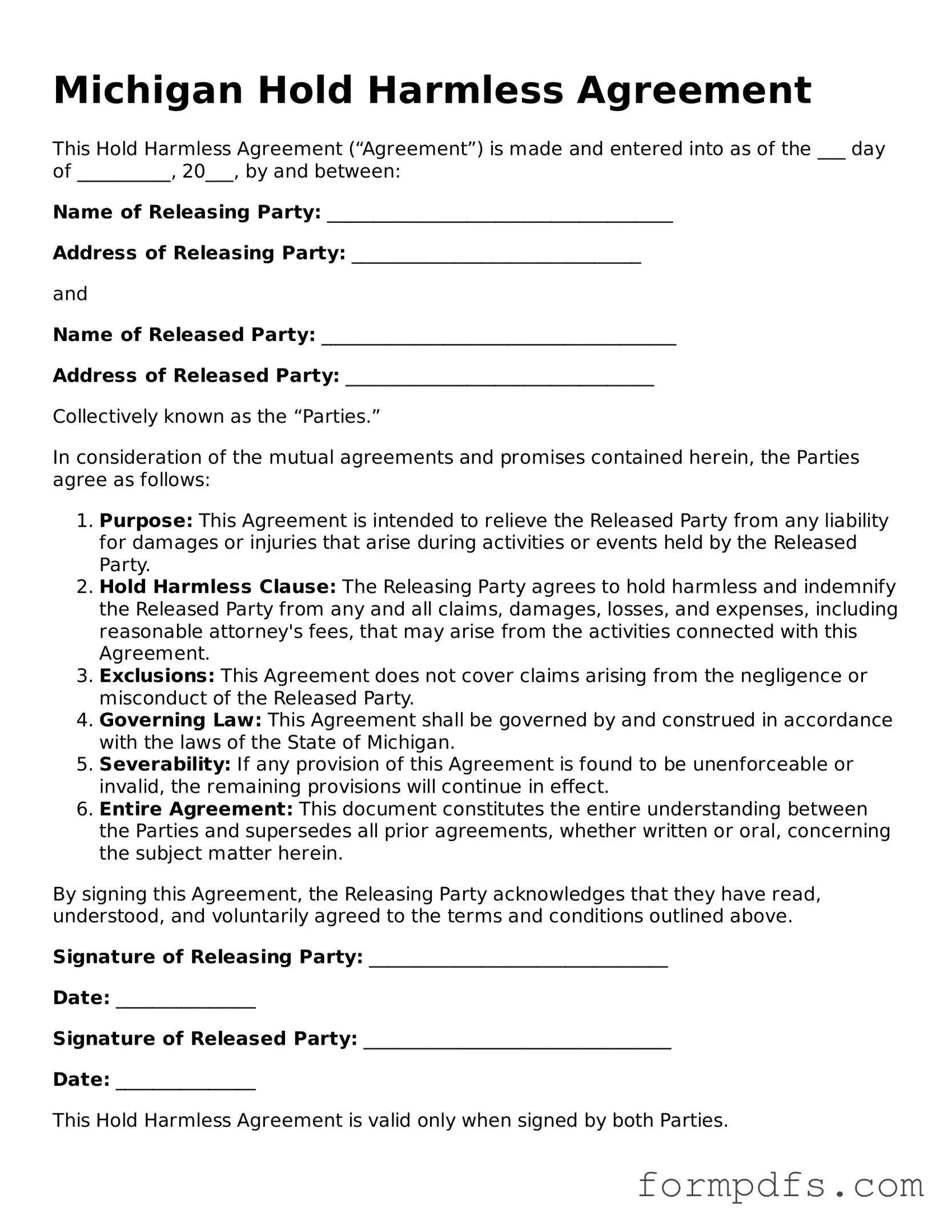What is a Hold Harmless Agreement in Michigan?
A Hold Harmless Agreement is a legal document that protects one party from liability or claims that may arise from the actions or negligence of another party. In Michigan, these agreements are often used in various contexts, such as construction projects, events, or rental agreements, to ensure that one party does not face financial repercussions due to the other party's actions.
Who typically uses a Hold Harmless Agreement?
Hold Harmless Agreements are commonly used by businesses, property owners, event organizers, and contractors. For instance, a venue owner may require event organizers to sign this agreement to protect against potential lawsuits resulting from injuries or damages that occur during the event.
What are the key components of a Hold Harmless Agreement?
Typically, a Hold Harmless Agreement includes several important elements: identification of the parties involved, a clear statement of the purpose of the agreement, a description of the activities or situations covered, and the specific liabilities being waived. Additionally, it may outline any limitations or exclusions to the agreement.
Is a Hold Harmless Agreement legally binding in Michigan?
Yes, a Hold Harmless Agreement can be legally binding in Michigan, provided that it is properly drafted and executed. For the agreement to be enforceable, it must be clear, concise, and agreed upon by all parties involved. However, courts may not enforce certain provisions if they are deemed overly broad or against public policy.
Can a Hold Harmless Agreement protect against gross negligence?
Generally, Hold Harmless Agreements may not protect a party from liability resulting from gross negligence or willful misconduct. Courts often scrutinize these agreements to ensure that they do not absolve a party of responsibility for serious wrongdoing. It is essential to consult with legal counsel to understand the limitations of such agreements.
How can one create a Hold Harmless Agreement?
Creating a Hold Harmless Agreement typically involves drafting a document that outlines the terms and conditions agreed upon by the parties. It is advisable to include specific details about the activities involved and the liabilities being waived. While templates are available online, seeking legal advice ensures that the agreement meets all legal requirements and adequately protects your interests.
Do I need a lawyer to draft a Hold Harmless Agreement?
While it is possible to draft a Hold Harmless Agreement without legal assistance, consulting a lawyer is highly recommended. A legal professional can help ensure that the agreement is comprehensive, enforceable, and tailored to your specific needs, minimizing the risk of future disputes.
What should I do if I am asked to sign a Hold Harmless Agreement?
If you are asked to sign a Hold Harmless Agreement, take the time to read it thoroughly. Understand the implications of the agreement, including what liabilities you may be waiving. If you have any concerns or questions, consider discussing them with a lawyer before signing. It's essential to be fully informed about what you are agreeing to.
